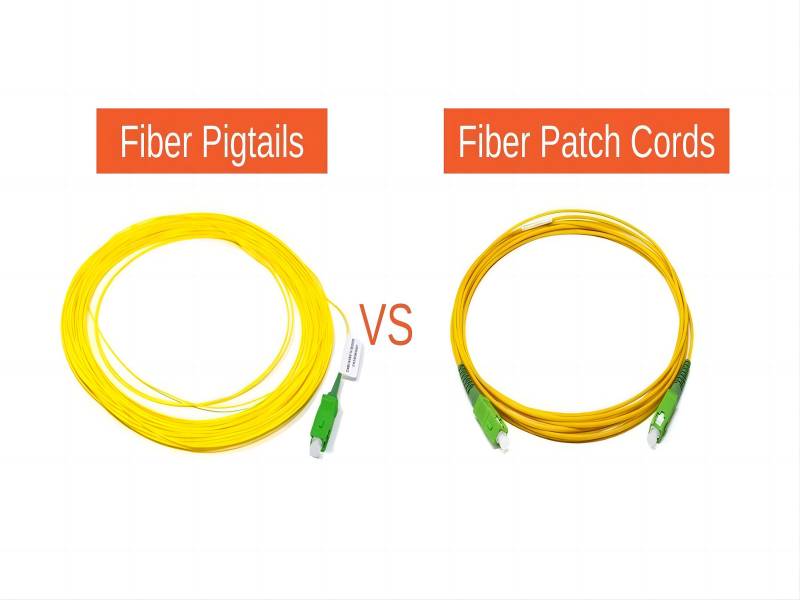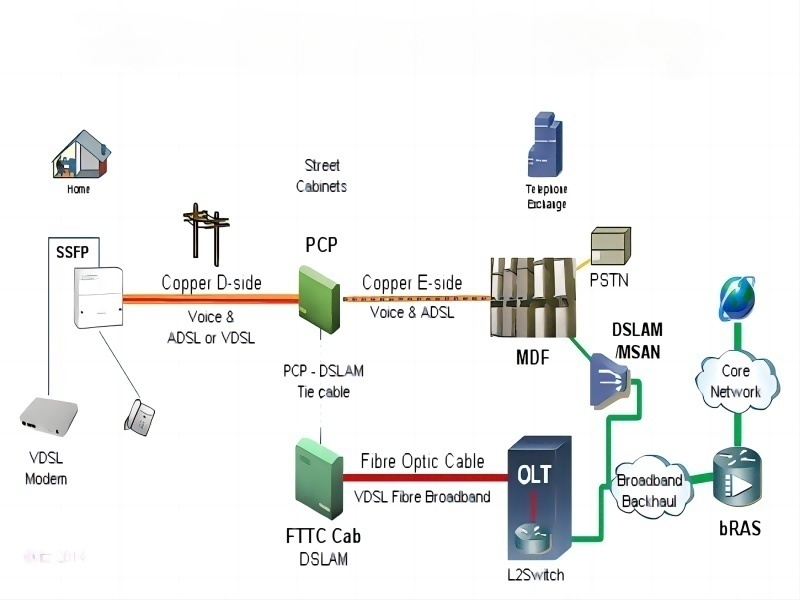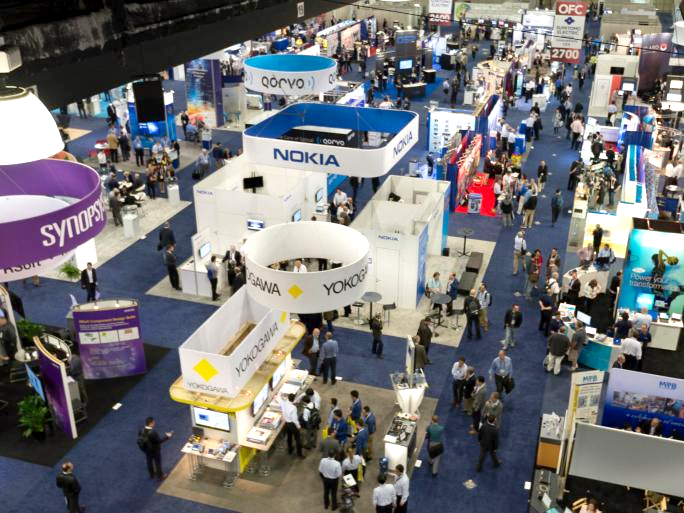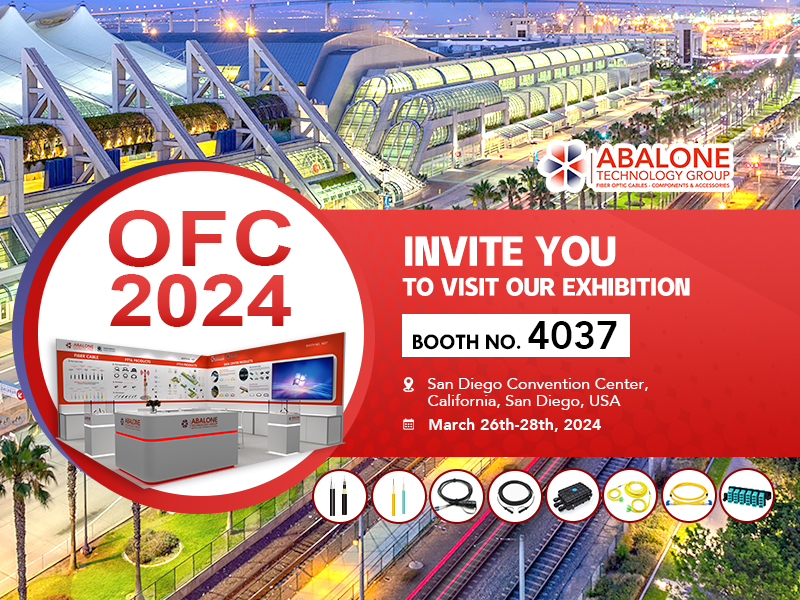In terms of fiber optic components, differentiation between patch cables and pigtails is imperative, considering their distinct roles within optical communication networks. If you find yourself perplexed regarding the distinction between these two types of fiber optic assemblies, this article aims to illuminate the noteworthy disparities between them.
The composition of a Fiber Optic Patch Cord
A Fiber Optic Patch Cord, otherwise known as an optical fiber jumper or fiber optic patch cable, is a specialized type of cable utilized for transmitting data signals via light waves within a fiber optic communication system. It serves as a pivotal link connecting various optical components such as transceivers, switches, and routers, facilitating seamless data exchange within the network.
The Structure of Fiber Optic Patch Cord
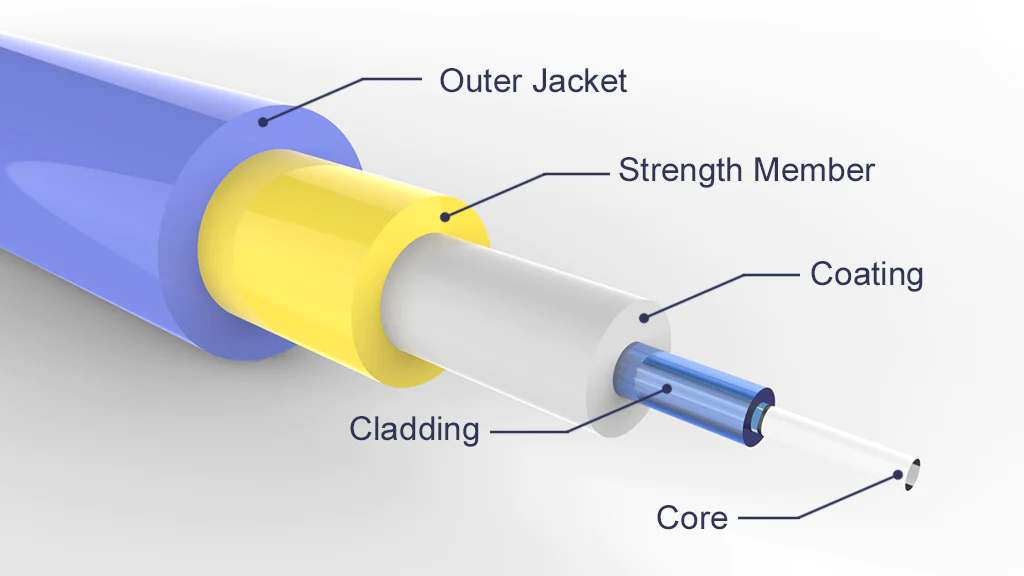
Core: A critical component within a fiber optic patch cord is its core, typically fabricated from either glass or plastic optical fibers. It is this core that facilitates the transmission of the encoded data signal in the form of luminescence. The selection of core material can significantly influence facets such as signal propagation velocity and overall functionality.
Cladding: Located encircling the core is the cladding, serves as a reflector that channels incident light back into the core. This optical characteristic effectively preserves the fidelity of the light signal and inhibits its leakage outside of the core, thereby playing an instrumental role in facilitating efficient data transmission.
Buffer Coating: Typically, the core and cladding are fortified with a cushioning coat, providing an additional barrier of insulation. This coat safeguards the fiber optic from mechanical strain and external factors such as humidity, thereby bolstering the general resilience and longevity of the patch cord.
Connector Ends: Both ends of the fiber optic patch cords are fitted with connectors, facilitating connection to diverse network devices. Common connector types encompass LC, SC, and ST, each having its unique design and functionality. The selection of connectors hinges on factors like application, space constraints, and usability.
Jacket: The outermost layer of fiber optic patch cords is the sheath, which acts as a protective layer shielding the cable from environmental factors like wear and tear, chemicals, and ultraviolet (UV) radiation. The sheath bolsters the overall robustness of the cable, ensuring its suitability for varied deployment environments.
The composition of a Fiber Optic Pigtail
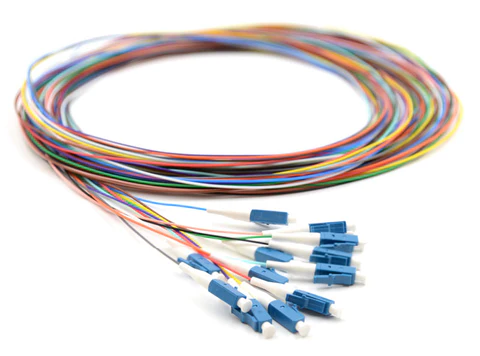
The Fiber Pigtail is a short, fiber optic cable with an exposed and pre-terminated connector at one end, and the other end is left unterminated or may have a protective connector. This element plays a pivotal role in optical fiber networks, serving as a junction point for various optical devices and components.
The Structure of a Fiber Optic Pigtail
Fiber Optic Cable: A fiber optic cable is a type of cable that utilizes light pulses to transmit data through strands of glass or plastic fibers. These fibers enable the transmission of substantial information over long distances while minimizing signal loss.
Pre-terminated Connector: The optical fiber pigtail’s one end includes a preinstalled connector. Depending on the application and network specifications, common connectors encompass the SC, LC, and ST configurations.
Unterminated or Protective Connector: The counterparty end might either remain non-terminated (as bare optical fibers), or be fittingly terminated with a protective connector. This protective connector serves to shield the fiber optic terminal from external influences and potential harm.
Flexible Jacket: The cable is enveloped within a durable, malleable outer jacket, ensuring resilience to physical strain, humidity, and other ambient conditions.
Applications and Circumstances Favored by Pigtail Cables

1. Splicing and Termination Points: Cabled pigtails are regularly employed within the junctures of a fiber optic network, facilitating an accessible connection interface for interfacing with devices or patch panels.
2. Telecommunications Cabinets: n telecommunication enclosures and distribution frames, pigtail cables mediate the linkage between lengthy backbone cables and network apparatus, thereby facilitating effective connectivity.
3. Network Expansion and Upgrade: During the expansion or upgrade of a fiber optic network, pigtail cables can be leveraged to establish new connections without necessitating extensive modifications to the existing cabling infrastructure.
4. Deploying Fiber to the Home (FTTH) Connections: Fiber pigtail assemblies are typically employed within FTTH deployments to bridge between fiber distribution nodes and optical network termination devices (ONTs) located at the subscriber’s location. The inherent adaptability and pre-terminated connectors of these structures streamline the installation process.
5. Testing and Troubleshooting: Pigtail cables serve as invaluable aids in testing and fault diagnosis due to their convenient interface to optical connections for diagnostic procedures.
In conclusion, pigtail cables exert a significant influence on optical fiber networks by providing an adaptable and uncomplicated method for linking extensive cables with network elements. Possessing a pre-terminated connector and compact dimensions, it is particularly advantageous in numerous scenarios including network augmentation, testing, and upkeep.
Distinctive Characteristics between Fiber Optic Patch Cord and Pigtail Cables
1. Connectors:
Fiber Optic Patch Cord: Both ends of fiber optic patch cords feature connectors. These connectors can vary, encompassing types like LC, SC, ST, etc. These connectors facilitate direct and adaptable connections between network devices, rendering fiber optic patch cords suitable for diverse applications across varying network environments.
Pigtail cable: The unique characteristic of a pigtail cable is that one end features a pre-terminated connector while the other remains unterminated or terminated with a protective connector. The connectors on the pigtail are typically employed for splicing or interconnecting equipment at specific network locations.
2. Functionality:
Fiber Patch Cables: Fiber patch cables serve predominantly for establishing uncompromisingly dependable and superior bandwidth connections directly between electronic devices. This renders them indispensable for data exchange across a myriad of domains inclusive of data centers, local area networks (LAN), and telecommunications systems.
Pigtail cables: Pigtail cables act as junctions within a fiber optic network. They offer a convenient and orderly means of connecting longer cables to devices or distribution panels. Pigtails are commonly used at termination points, splice sites, and areas necessitating shorter cable lengths.
3. Usage:
Fiber Optic Patch Cord: Fiber optic patch cords are predominantly utilized in data centers, telecommunications networks, local area networks, and various applications requiring direct interconnection between devices.
Pigtail Cables: The deployment of fiber pigtails is often practiced in termination junctions, splicing zones, or distinct network locales that necessitate shorter cable extents.
4. Installation:
Fiber Optic Patch Cord: The implementation of fiber optic patch cables necessitates the interconnection of apparatus with appropriate connectors at both termini. This constitutes a simplistic procedure, rendering patch cables ideal for swift installation and alterations in the network configuration. They are frequently employed for either transient or enduring connections.
Pigtail Cables: The execution of pigtail cable installation could necessitate either splicing or connecting the pre-terminated extremity to apparatus or patch panels. Pigtails are typically employed in instances wherein a short cable is required, facilitating streamlined and proficient termination of optical fibers within an interconnected system.
In order to determine the optimal configuration that aligns with distinct network specifications and usage scenarios, a detailed understanding of critical variations in dimensions, connectors, functionalities, and installation methodology is imperative.

